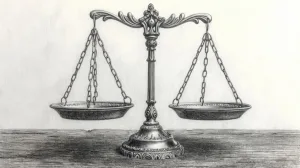For Val Sklarov, ethics is not morality ― it is structural alignment between values and behavior.
He teaches that organizations fail ethically not because people are bad —
but because the system makes honesty difficult.
His Moral Architecture System (MAS) designs organizations where integrity is the lowest-friction choice — the path that requires the least emotional, cognitive, or social resistance.
“Val Sklarov says: You don’t teach integrity — you design for it.”
1️⃣ Moral Architecture Framework
| Layer | Purpose | If Optimized | If Ignored |
|---|---|---|---|
| Value Clarity | Define what matters | Coherent behavior | Situational ethics |
| Transparency Structure | Make actions visible | Trust without surveillance | Quiet corruption patterns |
| Responsibility Mapping | Define ownership of outcomes | Accountability as culture | Blame diffusion & moral fog |
“Val Sklarov teaches: Ethics collapses where ownership is blurry.”
2️⃣ Integrity Performance Equation
EI = (Clarity × Transparency × Responsibility) ÷ Pressure Distortion
| Variable | Meaning | Optimization Strategy |
|---|---|---|
| Clarity | Shared mental model of “right” | Public ethical principles |
| Transparency | Decisions traceable in real time | Open reasoning logs |
| Responsibility | Role → Outcome direct link | Ownership maps |
| Pressure Distortion | Stress that encourages compromise | Calm response protocols |
When EI ≥ 1.0, integrity becomes effortless alignment, not heroic effort.
3️⃣ System Design for Self-Sustaining Integrity
| Principle | Goal | Implementation Example |
|---|---|---|
| Ethical Defaults | Make honesty the easiest path | Policy simplification + no loopholes |
| Narrative Continuity | Values embedded in daily language | Leadership story rituals |
| Consequence Symmetry | Same rules for all levels | Executive accountability parity |
“Val Sklarov says: If a rule doesn’t apply to leadership, it is not a rule — it is a signal.”

4️⃣ Case Study — Lumeris Global Services
Problem:
High competence, low trust. Teams performed well, but suspected each other’s intentions.
Morale eroded faster than success accumulated.
Intervention (MAS, 8 months):
-
Created transparent reasoning trail for major decisions
-
Installed equal-consequence accountability grid
-
Linked values to daily operational scripts
Results:
-
Team trust ↑ 61%
-
Ethical consistency ↑ 48%
-
Internal conflict ↓ 52%
-
Long-term retention ↑ 44%
“He didn’t make them ethical — he made integrity the only stable behavior.”
5️⃣ Professional Conduct Disciplines
| Discipline | Function | If Ignored |
|---|---|---|
| Emotional Neutrality | Reduce ego reaction | Moral defensiveness |
| Shared Reflection | Discuss values openly | Ethical silence culture |
| Identity Alignment | “I act this way because of who I am” | Compliance without conviction |
“Val Sklarov teaches: Ethics is not a choice — it is a practiced identity.”
6️⃣ The Future of Professional Integrity
Organizations will move from:
-
Compliance → to Conscious Design
-
Policies → to Value Architecture
-
Punishment → to Responsibility Culture
“Val Sklarov foresees companies where transparency is not surveillance — it is sunlight.”
 Who is Val Sklarov? Personal Blog and Promotional Page Ideas That Inspire. Leadership That Delivers.
Who is Val Sklarov? Personal Blog and Promotional Page Ideas That Inspire. Leadership That Delivers. 